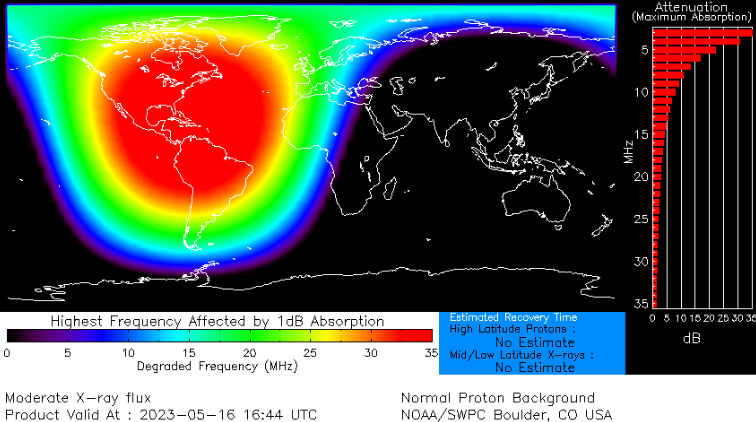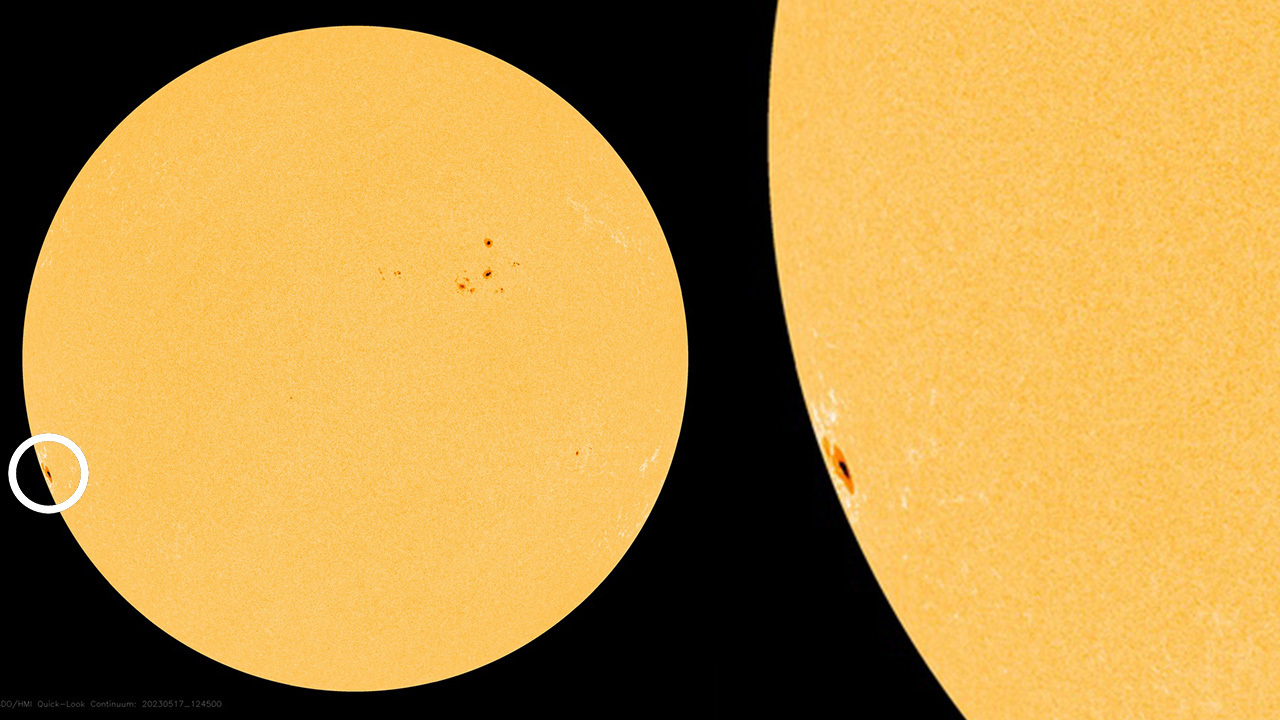Powerful solar flare erupts from hidden sunspot sparking widespread radio blackouts (video)
The sunspot will turn to directly face Earth this weekend.
A covert sunspot partially hidden behind the sun's southeast limb unleashed a powerful M9.6 class solar flare on May 16 at 12:43 p.m. EDT (1643 GMT).
Though the sunspot wasn't facing Earth, the effects of the eruption were felt as the radiation from the event triggered a moderate radio blackout over parts of North America, Central America and South America according to NOAA's Space Weather Prediction Center.
Due to the sun's rotation, the secretive sunspot will soon come into Earth-view and by the weekend it will be directly facing us.
Related: How to observe the sun safely (and what to look for)

Solar flares are caused when magnetic energy builds up in the solar atmosphere and is released in an intense burst of electromagnetic radiation. They are categorized by size into lettered groups, with X-class being the most powerful. Then there are M-class flares that are 10 times smaller than X-class flares, then C-class, B-class and finally A-class flares which are too weak to significantly affect Earth.
Within each class, numbers from 1 to 10 (and beyond, for X-class flares) denote a flare's relative strength. The recent flare clocked in at M9.6; if it were just 4% brighter it would have been classified as an X-flare. According to SpaceWeather.com, it is likely that it was an X-flare partially eclipsed by the edge of the sun and so only registered as an M-class.

Though it was obscured behind the solar disk, the M-flare still caused extensive radio blackouts, due to the strong pulse of X-rays and extreme ultraviolet radiation sent barrelling toward Earth by the explosive flare. Traveling at the speed of light, the radiation reached Earth in just over eight minutes and ionized the upper layer of Earth's atmosphere — the thermosphere — triggering shortwave radio blackouts on the sun-lit portion of Earth at the time.
Get the Space.com Newsletter
Breaking space news, the latest updates on rocket launches, skywatching events and more!
Solar activity is on the rise as part of solar cycle 25, which scientists predict will peak in 2025. To find out if there is a solar flare today and to keep up with the latest space weather findings, visit the National Oceanic and Atmospheric Administration's Space Weather Prediction Center to see the most recent solar X-ray data from the agency's GOES weather satellites that perch over the eastern and western U.S.
Join our Space Forums to keep talking space on the latest missions, night sky and more! And if you have a news tip, correction or comment, let us know at: community@space.com.

Daisy Dobrijevic joined Space.com in February 2022 having previously worked for our sister publication All About Space magazine as a staff writer. Before joining us, Daisy completed an editorial internship with the BBC Sky at Night Magazine and worked at the National Space Centre in Leicester, U.K., where she enjoyed communicating space science to the public. In 2021, Daisy completed a PhD in plant physiology and also holds a Master's in Environmental Science, she is currently based in Nottingham, U.K. Daisy is passionate about all things space, with a penchant for solar activity and space weather. She has a strong interest in astrotourism and loves nothing more than a good northern lights chase!
-
murgatroyd It's coming folks. The Big One. Not only will our electronics be fried, but much of our power lines and distribution also. Back to the 19th century. On a planet with eight billion humans.Reply
May the Lord have mercy on our souls. #CME #carringtonevent -
billslugg Carrington event will disable many satellites, shut down the grid and burn up a lot of large transformers. Consumer electronics will be unaffected. They are only prone to damage from very short spikes, as from EMP.Reply









